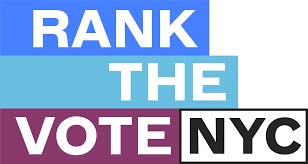U.S. Politics
How RCV Works

Ranked choice voting (RCV) describes voting systems that allow voters to rank candidates in order of preference, and then uses those rankings to elect candidates who best represent their constituents.
RCV is straightforward for voters: rank candidates in order of choice. Voters can rank as many candidates as they want, without fear that ranking others will hurt the chances of their favorite candidate.
How the votes are counted depends on whether RCV is used to elect a single office, like a mayor or governor, or whether it is used to elect more than one position at once, like an at-large city council or a state legislature elected in a multi-winner district.
RCV for Single-Winner Offices
(also known as Instant Runoff Voting / IRV)
For a single office, like for a mayor or governor, RCV helps to elect a candidate who reflects a majority of voters in a single election even when several viable candidates are in the race. Ranked choice voting is a way to ensure elections are fair for all voters. It allows voters the option to rank candidates in order of preference: one, two, three, and so forth.
If your vote cannot help your top choice win, your vote counts for your next choice.
In races where voters select one winner, if a candidate receives more than half of the first choices, that candidate wins, just like in any other election. However, if there is no majority winner after counting first choices, the race is decided by an “instant runoff.” The candidate with the fewest votes is eliminated, and voters who picked that candidate as ‘number 1’ will have their votes count for their next choice. This process continues until there’s a majority winner or a candidate won with more than half of the vote.


